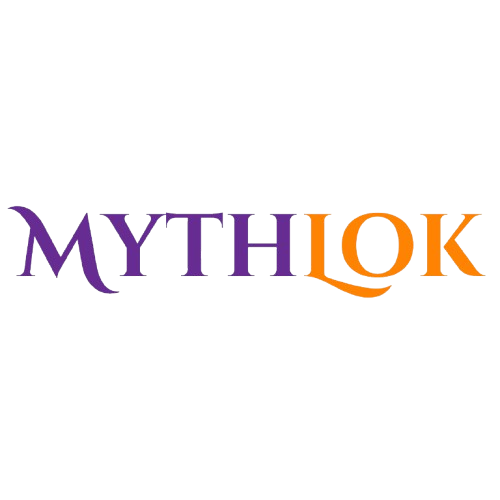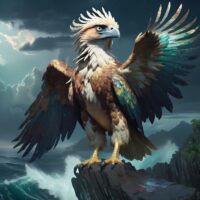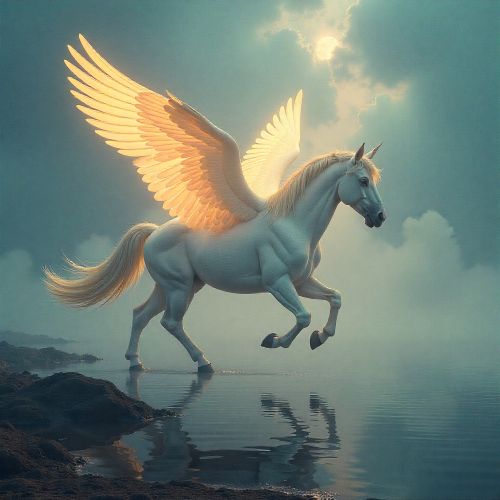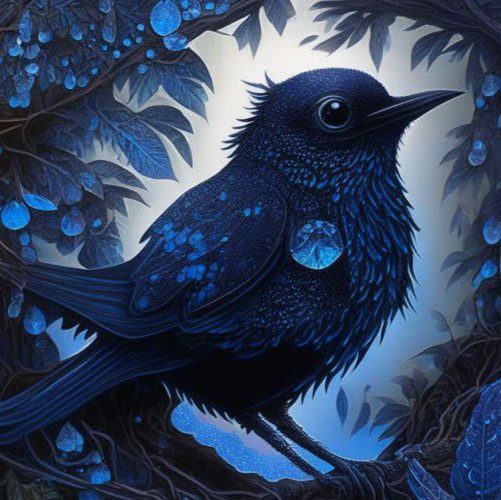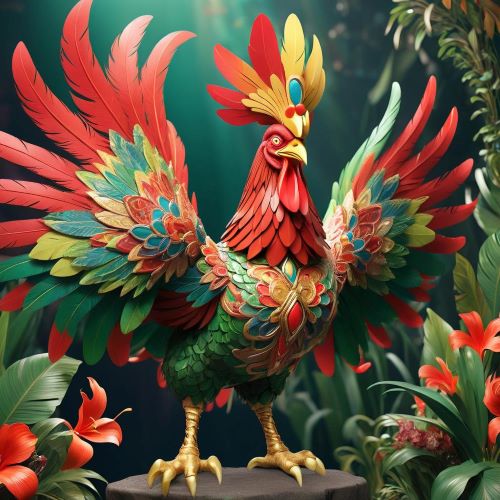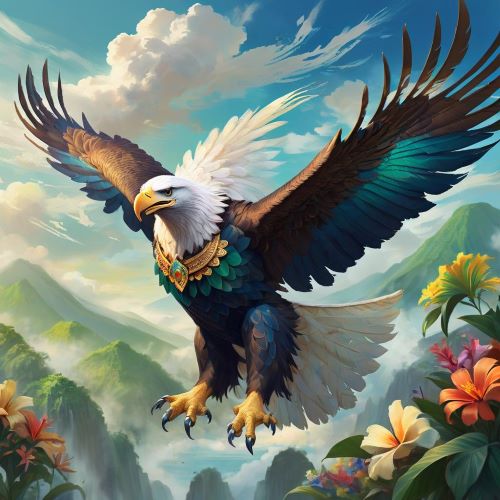Manaul : The Creator Bird
Listen
At a glance
| Description | |
|---|---|
| Origin | Philippine Mythology |
| Classification | Animals |
| Family Members | N/A |
| Region | Philippines |
| Associated With | Creation, Messaging |
Manaul
Introduction
Manaul occupies a revered space in Philippine mythology, representing both a celestial messenger and a symbol of natural order. Across various regions—from Tagalog lowlands to the Visayan islands—Manaul features prominently in creation myths and tales of divine conflict. In Tagalog lore, it is the bird that pecked open the bamboo that released Malakas and Maganda, the first humans. Meanwhile, Visayan stories describe Manaul as the king of birds who battled with wind deities, initiated the formation of islands, or attempted to mediate divine wars. In these stories, Manaul’s influence extends beyond folklore—it is a cosmic force, an omen-bringer, and a cultural symbol woven into the foundational identity of the archipelago.
Physical Traits
Although detailed descriptions vary by region, Manaul is universally portrayed as a massive, majestic bird. Its size is typically exaggerated to match its mythological status, often described as large enough to influence weather or shape the landscape. In some tales, its wings are vast enough to stir typhoons, while its beak is strong enough to crack bamboo or dislodge boulders from mountainsides. The bird’s feathers shimmer with otherworldly colors—sometimes golden, sometimes glowing with a spiritual hue—evoking a sense of divine power. These traits not only amplify its presence but also establish its dominion over air, land, and myth.
Family
There is little direct information about Manaul’s parentage or lineage, yet the bird is closely linked with other deities through its interactions. In Visayan mythology, Manaul is a participant in the cosmic struggle between Kaptan, the sky god, and Maguayan, god of the sea. Sometimes, the bird attempts to mediate the conflict, other times it is punished by Kaptan for interfering. In some versions of the myth, Manaul is supported by figures like Kanauay and Amihan—entities that sometimes function as helpers or, in certain accounts, are simply other names for Manaul itself. Though not part of a divine family per se, Manaul’s proximity to major deities situates it within the highest tier of mythological significance.
Other names
While the name “Manaul” is the most widely recognized, the bird is known by other names depending on the region and oral tradition. In some Tagalog accounts, it takes on the identity of Amihan, a deity of peace who also manifests as a bird. In the Maranao tradition, Manaul may be interpreted through the legendary Sarimanok, another avian symbol of divine connection. It is also occasionally confused with or linked to the tigmamanukan—an omen bird in precolonial Tagalog belief that signals fate through its flight patterns. These variations don’t necessarily contradict one another but highlight the fluidity of oral tradition and the way regional beliefs often overlap and evolve.
Powers and Abilities
Manaul’s legendary abilities are central to its mythological identity. In several Tagalog myths, it is the bird that initiates the emergence of humanity by splitting a bamboo stalk to reveal Malakas and Maganda. This act of creation cements its role as a divine intermediary. In Visayan versions, Manaul drops rocks into the ocean to form islands, either out of frustration with the gods or in a bid to establish peace between them. The bird’s actions often result in irreversible natural changes—continent formation, human birth, or divine punishment—making it a conduit of transformation. Manaul is also known to provoke natural disasters, or to be punished and transformed into an eagle, suggesting powers of metamorphosis or divine intervention upon its form. These powers position Manaul as more than a bird—it is an agent of change, simultaneously creator and disruptor.
Modern Day Influence
Although ancient, Manaul’s story continues to influence Filipino culture today. A growing movement to revive indigenous mythology has brought Manaul and similar figures back into the public imagination. Contemporary artists, writers, and digital storytellers are reinterpreting Manaul through visual art, literature, and video games. This modern folklore renaissance serves to reconnect the Filipino people with their precolonial past, emphasizing Manaul not only as a mythical creature but as a symbol of cultural resilience and ecological harmony. Manaul’s association with the Philippine eagle has also made it a figure of environmental awareness, particularly in conservation campaigns centered on endangered wildlife. In traditional communities, festivals and oral storytelling still feature Manaul as a sacred symbol. The myth has even found space in legal and moral narratives, with references in documents like the Code of Kalantiaw, where harming such a creature was once deemed punishable by death. Today, Manaul often symbolizes good fortune and protection, a gentle echo of its cosmic origins.
Related Images
Source
De Guzman, D. (2017). The Role of Birds and Serpents in Philippine Mythology. The Aswang Project. https://www.aswangproject.com/role-birds-serpents-philippine-mythology/
Kennedy, R. S., Gonzales, P. C., Dickinson, E. C., Miranda, H. C. Jr., & Fisher, T. H. (2000). A Guide to the Birds of the Philippines. Oxford University Press.
Morrow, P. (2008). The Fraudulent Legal Code of Kalantiaw. Retrieved from https://web.archive.org/web/20080510153401/http://www.mts.net/~pmorrow/kalant.htm
Mythical Encyclopedia. (n.d.). Manaul: Mythical Creatures. https://mythicalencyclopedia.com/manaul/
Monstropedia. (n.d.). Manaul. https://www.monstropedia.org/index.php?title=Manaul
Wikipedia contributors. (n.d.). Manaul. Wikipedia. https://en.wikipedia.org/wiki/Manaul
Frequently Asked Questions
What is lorem Ipsum?
I am text block. Click edit button to change this text. Lorem ipsum dolor sit amet, consectetur adipiscing elit. Ut elit tellus, luctus nec ullamcorper mattis, pulvinar dapibus leo.
What is lorem Ipsum?
I am text block. Click edit button to change this text. Lorem ipsum dolor sit amet, consectetur adipiscing elit. Ut elit tellus, luctus nec ullamcorper mattis, pulvinar dapibus leo.
What is lorem Ipsum?
I am text block. Click edit button to change this text. Lorem ipsum dolor sit amet, consectetur adipiscing elit. Ut elit tellus, luctus nec ullamcorper mattis, pulvinar dapibus leo.
What is lorem Ipsum?
I am text block. Click edit button to change this text. Lorem ipsum dolor sit amet, consectetur adipiscing elit. Ut elit tellus, luctus nec ullamcorper mattis, pulvinar dapibus leo.
What is lorem Ipsum?
I am text block. Click edit button to change this text. Lorem ipsum dolor sit amet, consectetur adipiscing elit. Ut elit tellus, luctus nec ullamcorper mattis, pulvinar dapibus leo.

